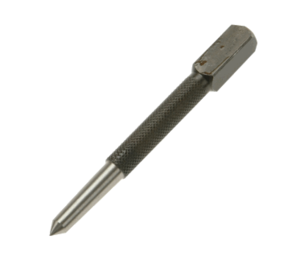Centre Punch: Difference between revisions
From DT Online
(Added Template) |
mNo edit summary |
||
| Line 3: | Line 3: | ||
=====Description===== | =====Description===== | ||
[https://en.wikipedia.org/wiki/Punch_(tool)#Centre '''Centre Punches'''] are ground to a strong point with an included angle of 90 degrees ''(in a similar manner to a '''[[ | [https://en.wikipedia.org/wiki/Punch_(tool)#Centre '''Centre Punches'''] are ground to a strong point with an included angle of 90 degrees ''(in a similar manner to a '''[[Scriber]]''')''. | ||
=====Features and Uses===== | =====Features and Uses===== | ||
Revision as of 08:38, 25 November 2016
Description
Centre Punches are ground to a strong point with an included angle of 90 degrees (in a similar manner to a Scriber).
Features and Uses
To stop a drill bit skidding about a metal surface, these are used to make a small indentation to locate the drill centre.
Note: Hold the punch to an angle to position on centre then raise to the vertical and strike it sharply with a hammer - but only once - striking several times may cause the punch to bounce around.
- The lowest cost option is to use a hand-held punch with a hammer but a wide range of automatic punches are available - both Dot Punches and Centre Punches.
- In general, Dot Punches have a sharper point (i.e. 60° instead of 90°) and need only the lower ranges of impact force (e.g. 20N to 50N).
- Automatic punches are simply pushed down against the work-piece and do not need to be struck - indeed, should NOT be struck with a hammer.
 |
 |
 |
 |
 |
 |
 |
| Centre Punch |
Automatic Centre Punch |
Bell Centre Punch |
Nail Punch |
Pin Punch |
Hollow Punch Set |
Number and Letter Punch Set |
